Description
■Two-day recording of the final Hammersmith performance of the Ziggy Stardust tour ■Complete recording of the July 3, 1973 performance as a soundboard sound source ■A raw leaked soundboard sound source that is unedited, unprocessed, and without any overdubs ■1973 Another mixed sound source from July 3, 1973 is reprinted from vintage analog ■ Recorded on July 2, 1973 as the first audience sound source What was Ziggy Stardust for Bowie? It may have been one of Bowie’s many temporary appearances, or it may have been a special alter ego of himself. Now that Bowie has passed away, we cannot know his true intentions, but it is certain that Ziggy was Bowie’s “hit role”, and the Ziggy era has a special resonance for fans. The same was true for Bowie, and songs from his Ziggy era held a special place in Bowie’s subsequent concerts. The album “Ziggy Stardust” was released in June 1972. The name Ziggy is said to be a play on Iggy Pop. Ziggy, who came from another planet, predicts that the Earth will end in five years, succeeds as a rock star, then falls, and finally commits suicide.Although the concept is difficult to understand, it has become a representative glam rock album for generations to come. It has been reported. And it’s not just the album that makes Ziggy’s impression strong. It can be said that the visual impression of Bowie’s Ziggy era was established through the tour accompanying this album. The Ziggy Stardust tour, which began in 1972, initially featured the performers wearing the same costumes as the album jacket and standing on stage without any special make-up. His appearance was completely different from the Ziggy that we immediately imagine today. However, as the tour progressed, the costumes became flashier, the make-up became harsher, and the staging actions became more racy. Ziggy Stardust can be said to have evolved by performing stages. In the process, the costumes created a bewitching and crazy atmosphere, the make-up became bizarre and far ahead of its time, and Bowie’s statement that he was “bisexual” became associated with sexual acts on stage. Ziggy became deified in such a way that his presence itself became a hot topic of conversation, rather than his music itself, such as his movements. Of course, this may have been an aspect of Bowie’s intention to create a buzz, and his aim was spot on, and it became not only an image of Ziggy to this day, but also an image of Bowie himself. The tour accompanying the album “Ziggy Stardust” spanned two years, from the end of January 1972 to July 1973, and included 182 performances in the UK, America, Japan, and again in the UK. I find it strange that they have not held concerts in any other European country, and that Japan is the only country other than the UK and the US that has held concerts. The set list for the early part of the tour has not been completely revealed, but some performances will begin with “Lady Stardust,” while others will begin with “Blow the Night.” Some performances included a medley of various songs, while others were performed only a few times. There was also a performance that featured the Beatles’ “This Boy.” Since it’s such a long tour, it’s only natural that the performances will gradually be refined, matured, evolved, and become closer to perfection. And the culmination of that is the final performance of all 182 performances in London, which is a series of performances at Hammersmith Odeon. The venue chosen for Ziggy’s final performance was the traditional London venue, Hammersmith Odeon. Here, a concert was held for two days, July 2nd and 3rd, 1973, as the culmination of a two-year tour and to show Ziggy’s final appearance. In particular, the concert on July 3rd, which was the real final performance, is famous because it was recorded live and even made into a movie. The general visual image of Ziggy was probably determined by the film of this final performance at Hammersmith Odeon. Discs 1 and 2 completely record this Hammersmith Odeon final performance with a leaked soundboard. Since it is a leaked sound source, there are no overdubs or edits, and it is characterized by recording the vivid stage performance of the day. The difference is immediately noticeable when you listen to it, and you can’t hear it on “Ziggy Stardust Motion Picture.” The sound is exactly as it is, and the mix is a little more vocal, probably because the instruments and cheers were dubbed later. It has an irresistible balance, with a close-up feeling that makes you feel like Bowie is singing right in front of you. The echo is also suppressed, and it feels like Bowie’s live singing is as it is, which is different from the sense of presence in audience recording, and it feels like you are facing Bowie in a closed room, which can be called a closed-off feeling. It’s a close sound. And perhaps the greatest feature of this sound source is that you can clearly hear not only the song but also Bowie’s breathing. In any case, the sound quality is of a high quality that cannot be accommodated in the category of conventional sound boards, and there is no doubt that it is a treasure-like sound source for Bowie fans. And the content included is also great. Not only does it include parts that have never been heard before, but it is also a complete recording, from the announcements before the concert to the music in the venue after the concert. It can be said to be a valuable source of information about how concerts were held in the UK in 1973. The event begins with a greeting from the moderator. He exaggerates how successful and wonderful the Ziggy Stardust tour was, and how it attracted a large number of people. Prior to the concert, a short undercard by Mike Garson will begin. Mike Garson has worked with Bowie so many times that he is called “Bowie’s Piano Man,” not only recording but also accompanying him as a touring member. Here he plays a medley of Bowie’s songs on the piano. Then, following Beethoven’s chorus, “As You Will” begins with a loud bang. This song, which was established as the opening number after various trials and errors, is full of speed and can be said to be a number suitable for the opening. Next up is the album’s title song, “Ziggy Stardust.” The intro guitar riff is probably one of the most famous riffs in rock history, along with the Stones’ “Satisfaction.” It is interesting that in the lyrics that represent the album concept, there is an expression of Ziggy’s character as “a cat-like guy from Japan.” The third song is the first song from the album “Aladdin Sane”, “Watch Out for That Man.” During this tour, “Aladdin Sane” was released, and Ziggy was already a thing of the past. The era had already shifted to Aladdin Sane instead of Ziggy. Still, as the same tour, I can’t help but feel that there is a limit to how Bowie can still play Ziggy. I think Bowie must have wanted to take the next step as soon as possible. The fourth song is a medley of “The Wild-Eyed Boy from the Free Cloud”, “All the Young Bastards”, and “You Pretty Things”. It can be seen in the sound source that various medleys were tried on this tour, but this 3-song medley was chosen on the final day. And the last song in the first half of the concert is “My Death” performed by acoustic. As if to wake up the heated audience, he spoke to the noisy audience, saying, “This is a quiet song, so please listen to it quietly. Shhh!” Still, he once again urged the noisy audience to “be quiet.” The concert will take an intermission here. The William Tell Overture is played in the venue, and the second half begins. The first song in the second half is “The Man Who Fought in Mind” from the album “Aladdin Sane.” As can be said for the entire concert, Mick Ronson was given the lead in the performance, and the result was an arrangement that featured a hard guitar sound throughout. The distorted guitar sound is also much harder than the studio version of “Ki no Futakuta Actor.” Furthermore, Bowie’s harmonica, which is played in parallel with the guitar, has a jazz style and is very wonderful. Also, the impressive piano in “Time” was created by Bowie himself. One of the highlights of the second half is probably the “width of the circular orbit.” The studio version was also a long song, over 8 minutes long, but this live version has swelled to over 15 minutes, about twice as long. At this time, there was a trend for artists such as Cream and Zeppelin to perform long performances with improvisation, and Bowie’s songs, which served as highlights, corresponded to this “width of a circular orbit.” Mick Ronson plays a long guitar solo as if to say, “What’s up!”, but the melody is played with smooth fingering, and despite its length, it doesn’t feel boring. Also, on some of the previously released records, there was a part where the original tape had severe pain and the sound seemed to cut out around 12 and a half minutes, but this work has no such pain, and it can be seen that it is a more low-generation source. On this final day, a special guest will be on stage for the only time throughout the tour. That was Jeff Beck’s appearance on two songs, “Gene Genie” and “Round and Round.” It is not clear how Jeff Beck decided to appear, but the fact that Jeff Beck, who was already famous, jumped in is proof that Bowie was an up-and-coming artist. The Beatles’ “Love Me Do” is inserted into “Gene Genie”. And the last day of Hammersmith Odeon is famous because of the words Bowie said before playing “Rock’n’Roll Suicide” at the end. “Not only is it the last show of the tour, but it’s the last show that we’ll ever do.Thank you.” The comment caused a stir and could be called Bowie’s retirement announcement, and the audience let out a scream-like sound. As later history has shown, this was not Bowie’s retirement but Ziggy’s retirement declaration, but it was not only to make this show special, but also to bury Ziggy, who had been greatly deified as Bowie, as an artist. Isn’t this an expression of a deep-seated desire to move on to the next stage? Comments like this that seem to bury the past are Bowie’s specialty, and he later made similar comments on the 1990 Sound & Vision tour. For Bowie, parting with the past, whether it’s possible or not, is probably a declaration of determination necessary to move on. And the last song that started is “Rock’n’Roll Suicide”, just like the album. The song begins quietly, as if talking, and gradually builds up in the middle, and in the second half, it turns into a scream. The composition seems to have been influenced by “Stairway to Heaven”. Here, one of Bowie’s greatest performances is born. You are not alone! Look at me! you are amazing! Give me your hand! As Bowie’s earnest performance moves his heart, the screams gradually turn into lamentations, and finally into murmurs. And then there’s the ending, which seems to go on forever with just the chorus “Wonderful”. Bowie left the stage with the words “Bye, I love you all.” The second half of Disc 2 includes another mix of the same Hammersmith performance on July 3, 1973 as a bonus track. This is a reprint of Analog Boot’s masterpiece “HIS MASTER’S VOICE”. The drawbacks, of course, are that it is not a complete recording and there are some skips in the sound. Even so, it has established a firm position as a masterpiece due to its good sound quality, and is still a popular record today. The sound is richer than the original leaked sound source, and this is probably due to some overdubs. If the main part is a no-touch raw sound source, it is unclear at what stage this is, but it must have been processed in some way in preparation for release. I would like you to listen to it and compare it to the main story and feel the difference. Disc 3 contains the performance on July 2, 1973, the first day of the Hammersmith Odeon series. Please enjoy this series of performances together with the main story using the audience sound source that appeared for the first time. The performance itself was very fulfilling, and just like the final day, it was wonderful. Unfortunately, it is not a complete recording, as you can see from the fact that it is on one disc, but from the sound you can tell that it was a very serious performance, probably meant as a rehearsal for the final day of recording. You can tell by just that. “Round and Round” is a version without Jeff Beck jumping in, with only Mick Ronson on guitar. It would also be fun to compare this with the Jeff Beck version on the final day. The latest work from the Bowie specialty label is a masterpiece that will go down in history. Discs 1 and 2 include a complete recording of the July 3, 1973 Hammersmith Odeon performance with a vivid leaked soundboard sound source where you can even hear Bowie’s breathing. It is a raw sound without any processing such as overdubs. And the second half of disc 2 includes another mix sound source from the same day as a bonus track from the famous analog record. It has undergone some processing, so it could be used as research material to compare it with the main story and see what kind of processing was added later. And Disc 3 contains the Hammersmith Odeon performance on July 2, 1973 with the first appearance audience sound source. I would like you to listen to this and compare it with the last day. As mentioned above, it is a definitive title that includes both consecutive performances at Hammersmith Odeon, the final destination of the Ziggy Stardust tour, for two days. HAMMERSMITH ODEON LONDON U.K. July 3, 1973 DISC ONE 01. Introduction by BARRY BETHAL MIKE GARSON as opening act 02. Space Oddity – Ziggy Stardust – John, I’m Only Dancing – Life On Mars? DAVID BOWIE as main act 03. A Clock Orange Theme – Symphony No.9 “Ode To Joy” 04. Hang On To Yourself 05. Ziggy Stardust 06. Watch That Man 07. Wild Eyed Boy From Freecloud – All The Young Dudes – Oh! You Pretty Things 08. Moonage Daydream 09 Changes 10. Space Oddity 11. My Death 12. William Tell Overture 13. Cracked Actor 14. Time 15. Width Of A Circle 16. Band Introduction DISC TWO 01. Let’s Spend The Night Together 02. Suffragette City 03. White Light White Heat 04. The Jean Genie – Love Me Do with JEFF BECK 05. Round And Round with JEFF BECK 06. Farewell Messege 07. Rock ‘N Roll Suicide 08. Outroduction – Pomp And Circumstance ALTERNATE SOURCE from the vinayl “HIS MASTER’S VOICE” The Amazing Kornyfone Record 09. Introduction 10. Hang On To Yourself 11. The Wild Eyed Boy From Freecloud – All The Young Dudes – Oh! You Pretty Things 12. Moonage Daydream 13. Changes 14. Space Oddity 15. Time 16. Suffragette City 17 . The Jean Genie – Love Me Do with JEFF BECK 18. Rock ‘N Roll Suicide HAMMERSMITH ODEON LONDON U.K. July 2, 1973 DISC THREE 01. Ode To Joy 02. Hang On To Yourself 03. Ziggy Stardust 04. Watch That Man 05. Wild Eyed Boy From Freecloud – All The Young Dudes – Oh! You Pretty Things 06. Moonage Daydream 07. Changes 08. Space Oddity 09. My Death 10. Width Of A Circle 11. Band Introduction 12. Let’s Spend The Night Together 13. Suffragette City 14. White Light White Heat 15. Round And Round
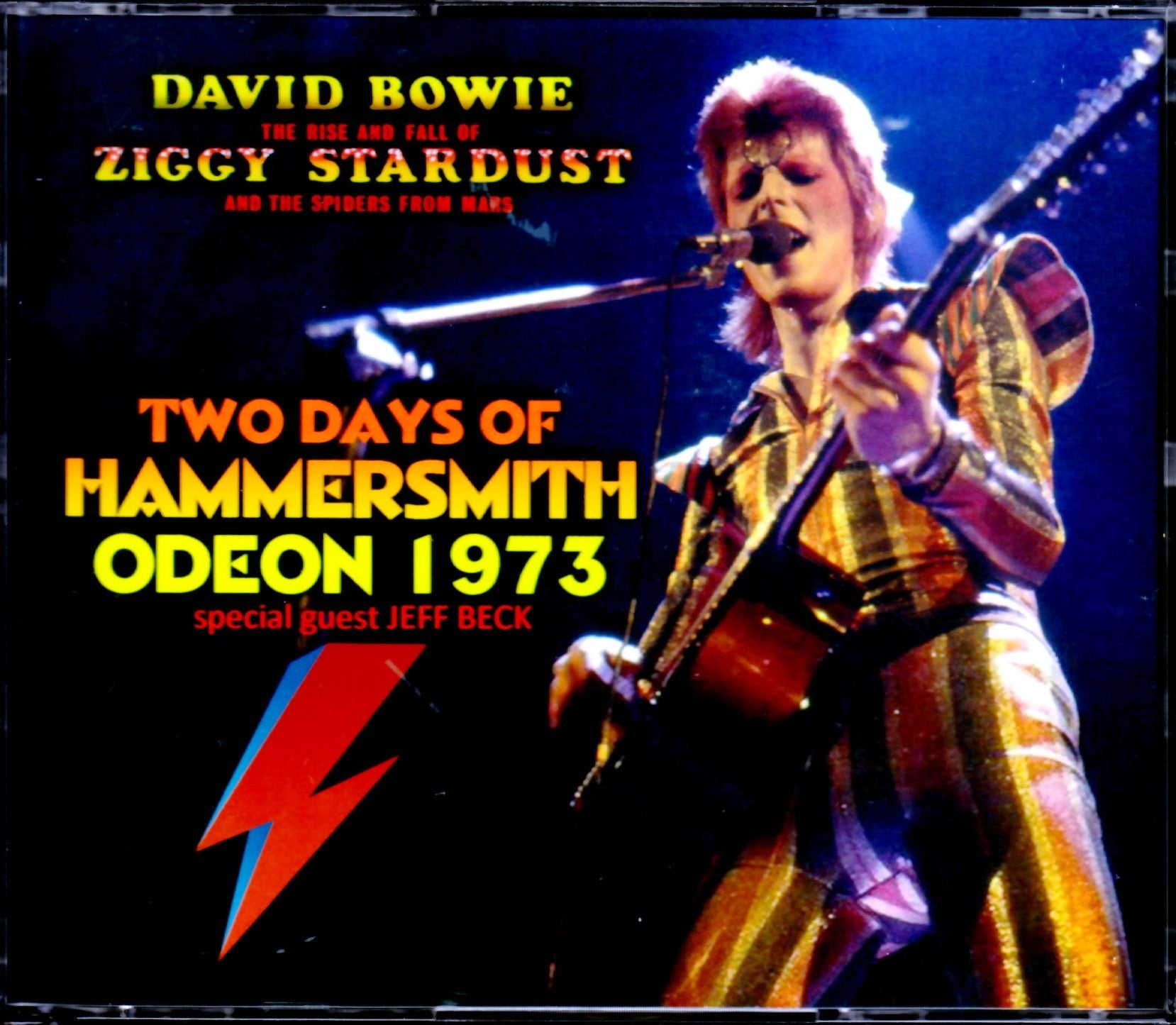
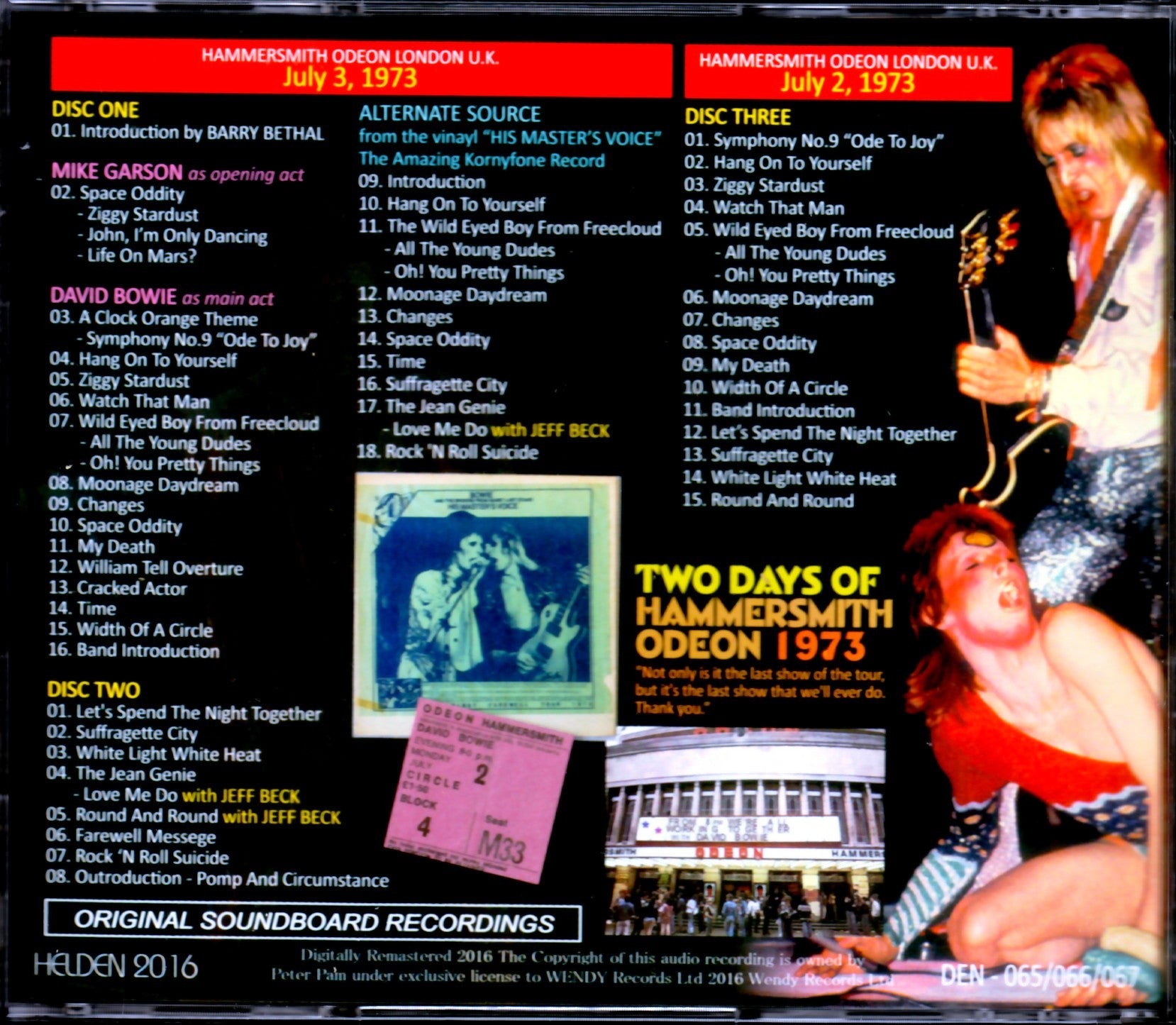

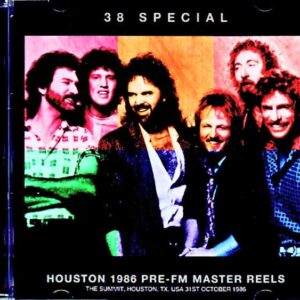

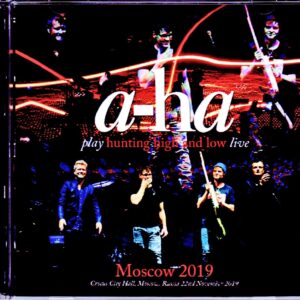
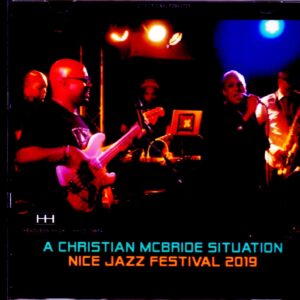
Reviews
There are no reviews yet.